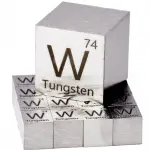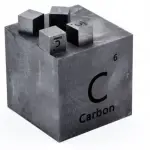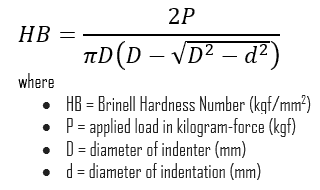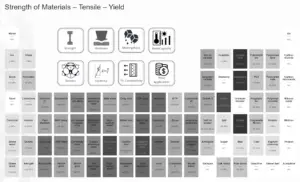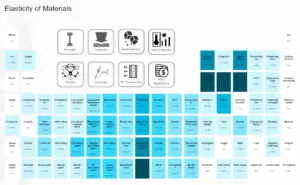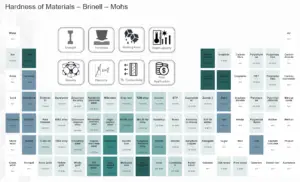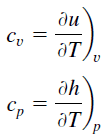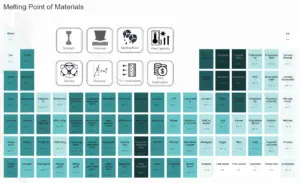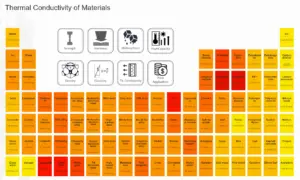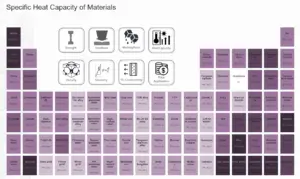About Tungsten Carbide
Tungsten Carbide is a very dense carbide containing equal parts of tungsten and carbon atoms. In its most basic form, tungsten carbide is a fine gray powder, but it can be pressed and formed into shapes through a process called sintering for use in industrial machinery, cutting tools, abrasives, armor-piercing shells and jewellery. Tungsten carbide is approximately twice as stiff (high modulus of elasticity) as steel. Tungsten carbide has very high impact resistance and it has very high strength for a material so hard and rigid. Compressive strength is higher than virtually all melted and cast or forged metals and alloys. With temperature increase to 1400°F, tungsten carbide retains much of its room temperature hardness.
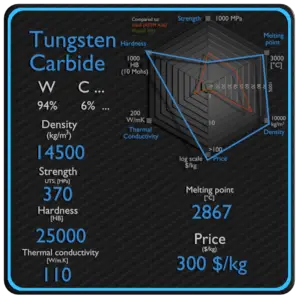
Summary
| Name | Tungsten Carbide |
| Phase at STP | solid |
| Density | 14500 kg/m3 |
| Ultimate Tensile Strength | 370 MPa |
| Yield Strength | 330 MPa |
| Young’s Modulus of Elasticity | 600 GPa |
| Brinell Hardness | 25000 BHN |
| Melting Point | 2867 °C |
| Thermal Conductivity | 110 W/mK |
| Heat Capacity | 292 J/g K |
| Price | 300 $/kg |
Composition of Tungsten Carbide
Tungsten Carbide is prepared by reaction of tungsten metal and carbon at 1400–2000 °C. Powdered tungsten carbide is mixed with another powdered metal, usually cobalt can be pressed and formed into shapes through a process called sintering. Sintering is usually carried out below the melting temperature, so that a liquid phase is normally not present. Sintering is often chosen as the shaping process for materials with extremely high melting points such as tungsten, molybdenum or uranium dioxide ceramics.
Applications of Tungsten Carbide
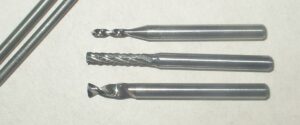
Mining and mineral processing demand wear-resistant machines and components, because the energies and masses of interacting bodies are significant. For this purposes, materials with the highest wear-resistance must be used. For example, Tungsten Carbide is used extensively in mining in top hammer rock drill bits, downhole hammers, roller-cutters, long wall plough chisels, long wall shearer picks, raiseboring reamers, and tunnel boring machines. The cemented composites of tungsten carbide-cobalt are known by many different trade names, including Widia and Carboloy.
Mechanical Properties of Tungsten Carbide
Strength of Tungsten Carbide
In mechanics of materials, the strength of a material is its ability to withstand an applied load without failure or plastic deformation. Strength of materials basically considers the relationship between the external loads applied to a material and the resulting deformation or change in material dimensions. In designing structures and machines, it is important to consider these factors, in order that the material selected will have adequate strength to resist applied loads or forces and retain its original shape.
Strength of a material is its ability to withstand this applied load without failure or plastic deformation. For tensile stress, the capacity of a material or structure to withstand loads tending to elongate is known as ultimate tensile strength (UTS). Yield strength or yield stress is the material property defined as the stress at which a material begins to deform plastically whereas yield point is the point where nonlinear (elastic + plastic) deformation begins. In case of tensional stress of a uniform bar (stress-strain curve), the Hooke’s law describes behaviour of a bar in the elastic region. The Young’s modulus of elasticity is the elastic modulus for tensile and compressive stress in the linear elasticity regime of a uniaxial deformation and is usually assessed by tensile tests.
See also: Strength of Materials
Ultimate Tensile Strength of Tungsten Carbide
Ultimate tensile strength of Tungsten Carbide is 370 MPa.
Yield Strength of Tungsten Carbide
Yield strength of Tungsten Carbide is 330 MPa.
Modulus of Elasticity of Tungsten carbide
The Young’s modulus of elasticity of Tungsten Carbide is 600 MPa.
Hardness of Tungsten Carbide
In materials science, hardness is the ability to withstand surface indentation (localized plastic deformation) and scratching. Brinell hardness test is one of indentation hardness tests, that has been developed for hardness testing. In Brinell tests, a hard, spherical indenter is forced under a specific load into the surface of the metal to be tested.
The Brinell hardness number (HB) is the load divided by the surface area of the indentation. The diameter of the impression is measured with a microscope with a superimposed scale. The Brinell hardness number is computed from the equation:
Brinell hardness of Tungsten Carbide is approximately 25000 BHN (converted).
See also: Hardness of Materials
Thermal Properties of Tungsten Carbide
Tungsten Carbide – Melting Point
Melting point of Tungsten Carbide is 2867 °C.
Note that, these points are associated with the standard atmospheric pressure. In general, melting is a phase change of a substance from the solid to the liquid phase. The melting point of a substance is the temperature at which this phase change occurs. The melting point also defines a condition in which the solid and liquid can exist in equilibrium. For various chemical compounds and alloys, it is difficult to define the melting point, since they are usually a mixture of various chemical elements.
Tungsten Carbide – Thermal Conductivity
Thermal conductivity of Tungsten Carbide is 110 W/(m·K).
The heat transfer characteristics of a solid material are measured by a property called the thermal conductivity, k (or λ), measured in W/m.K. It is a measure of a substance’s ability to transfer heat through a material by conduction. Note that Fourier’s law applies for all matter, regardless of its state (solid, liquid, or gas), therefore, it is also defined for liquids and gases.
The thermal conductivity of most liquids and solids varies with temperature. For vapors, it also depends upon pressure. In general:
Most materials are very nearly homogeneous, therefore we can usually write k = k (T). Similar definitions are associated with thermal conductivities in the y- and z-directions (ky, kz), but for an isotropic material the thermal conductivity is independent of the direction of transfer, kx = ky = kz = k.
Tungsten Carbide – Specific Heat
Specific heat of Tungsten Carbide is 292 J/g K.
Specific heat, or specific heat capacity, is a property related to internal energy that is very important in thermodynamics. The intensive properties cv and cp are defined for pure, simple compressible substances as partial derivatives of the internal energy u(T, v) and enthalpy h(T, p), respectively:
where the subscripts v and p denote the variables held fixed during differentiation. The properties cv and cp are referred to as specific heats (or heat capacities) because under certain special conditions they relate the temperature change of a system to the amount of energy added by heat transfer. Their SI units are J/kg K or J/mol K.
Properties and prices of other materials
material-table-in-8k-resolution
